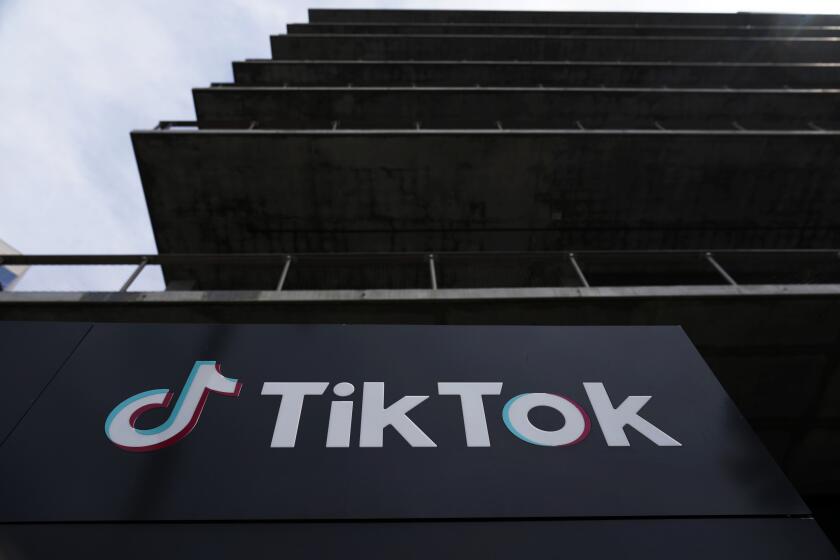Hewlett-Packard will cut up to 30,000 jobs as part of restructuring
- Share via
Hewlett-Packard Co. is once again slashing costs and eliminating positions — this time up to 30,000 employees.
The beleaguered tech giant said Tuesday that it expected to reduce its workforce by 25,000 to 30,000 people, mainly connected with the enterprise side of the business. Those staff cuts and other measures will help HP save about $2.7 billion.
“These restructuring activities will enable a more competitive, sustainable cost structure for the new Hewlett-Packard Enterprise,” Chief Executive Meg Whitman said. “We’ve done a significant amount of work over the past few years to take costs out and simplify processes, and these final actions will eliminate the need for any future corporate restructuring.”
It’s unclear how many people HP now employs. The Palo Alto company’s website lists a total of 302,000 as of Oct. 31, 2014. An HP spokesperson called it “the most current number.”
A year ago, HP announced that it would split into two companies in an attempt to be more nimble, separating its personal computer and printer division from its business services unit.
The split is expected by the end of October. Afterward, the company’s personal computer and printing business will become known as HP Inc., while its technology infrastructure, software and services businesses will be called Hewlett-Packard Enterprise.
Under the separation, Whitman will become chairwoman of HP Inc. and CEO of Hewlett-Packard Enterprise. HP Inc. will be led by Dion Weisler, currently executive vice president of the company’s printing and personal systems business.
HP, which was the world’s No. 1 PC company for years, has struggled to adapt to a mobile and cloud-based tech world. It has been undergoing a transformation under the leadership of Whitman, the former EBay Inc. executive who became HP’s chief executive in September 2011 after she lost a race for California governor to Jerry Brown.
Whitman quickly instituted a five-year turnaround plan at HP, which included cutting thousands of jobs to save costs. Since the implementation of the plan, more than 50,000 employees have left the company.
Tech analysts weren’t surprised by the latest cuts.
“It’s the overall top line that HP has not been able to turn around, and in order to be able to protect the bottom line for shareholders you have to reduce costs,” said Neil MacDonald, an analyst at Gartner. “It’s not a sign for organizations [that purchase from HP] to shift vendors, but it does reinforce the fundamental head winds HP faces.”
MacDonald said HP is shifting priorities to more lucrative market segments and probably will add employees to areas such as servers, cybersecurity and big-data analytics.
“There are pockets of strength,” he said. “HP is still profitable and has good cash flow.”
The reductions were announced at HP’s 2015 securities analysts meeting. Executives provided a strategy update and financial outlook for the new HP Enterprise company, which will trade under the ticker symbol “HPE” and will have more than $50 billion in annual revenue.
The new company forecast fiscal 2016 earnings at 75 cents to 85 cents per share. It said it expected fiscal 2016 revenue to grow year over year.
“Hewlett-Packard Enterprise will be smaller and more focused than HP is today, and we will have a broad and deep portfolio of businesses that will help enterprises transition to the new style of business,” Whitman said. “As a separate company, we are better positioned than ever to meet the evolving needs of our customers.”
Shares of HP rose 7 cents, or less than 1%, to close at $27.11 on Tuesday. Following news of the cost reductions, the shares fell nearly 3% after hours before recovering a few hours later.
Hewlett-Packard is one of the largest technology companies in the world and has a market cap of $48.75 billion.
The company was founded 76 years ago by Bill Hewlett and Dave Packard, who became friends at Stanford University and launched their business from a rented garage.
Today’s HP faces the same challenges confronting companies such as Dell and IBM, which have laid off thousands of people in the last two years.
“Nothing is unique to HP,” said Patrick Moorhead, founder and principal analyst at Moor Insights & Strategy. “HP just did it later in the cycle. “
In addition to staff cuts, he said, HP might also move jobs to countries where it can pay workers less.
Twitter: @byandreachang
Twitter: @peard33
More to Read
Inside the business of entertainment
The Wide Shot brings you news, analysis and insights on everything from streaming wars to production — and what it all means for the future.
You may occasionally receive promotional content from the Los Angeles Times.












